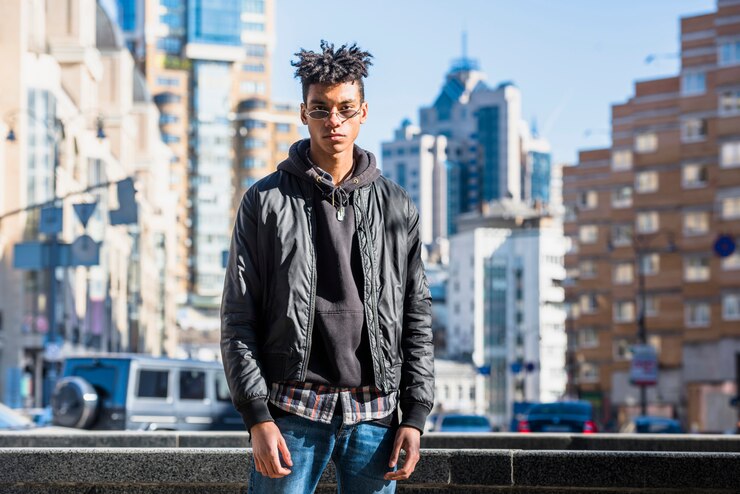Fashion is an ever-evolving landscape, but certain outfits transcend time and culture, becoming iconic representations of style and influence. These ensembles are more than just clothing; they encapsulate moments in history, symbolize cultural movements, and showcase the creativity of designers and wearers alike. This article explores some of the most iconic outfits in history, examining their origins and the impact they have had on the fashion world and society at large.
The Little Black Dress (LBD)
No discussion of iconic outfits can begin without mentioning the Little Black Dress, popularized by Coco Chanel in the 1920s. The LBD redefined women’s fashion, offering a versatile and chic option that could be worn for various occasions. Its simplicity and elegance made it a staple in every woman’s wardrobe. Audrey Hepburn’s portrayal of elegance in the 1961 film Breakfast at Tiffany’s, where she wore a classic black dress designed by Hubert de Givenchy, cemented the LBD’s status as a timeless piece. It continues to be celebrated and reinterpreted by designers, affirming its place as a cornerstone of modern fashion.
The Elvis Jumpsuit
In the realm of music and performance, few outfits are as memorable as Elvis Presley’s flamboyant jumpsuits from the late 1960s and 1970s. Adorned with rhinestones, high collars, and flared legs, these outfits represented the epitome of rock ‘n’ roll glamour. The jumpsuit was not just a fashion choice but a statement of Elvis’s persona, combining sex appeal with a theatrical flair. His outfits influenced a generation of performers, inspiring artists like David Bowie and Lady Gaga, who embraced bold fashion choices in their careers.
The Power Suit
The 1980s marked a significant shift in women’s fashion, with the power suit emerging as a symbol of female empowerment in the workplace. Designers like Giorgio Armani created structured suits featuring shoulder pads, which conveyed strength and authority. Figures like Margaret Thatcher, the first female Prime Minister of the UK, and television characters such as Joan Holloway from Mad Men popularized this look. The power suit not only represented the growing presence of women in corporate settings but also reshaped societal views on gender roles. Its influence is still evident in contemporary fashion, where tailored suits remain a popular choice for women.
Princess Diana’s Revenge Dress
One of the most talked-about outfits in royal history is Princess Diana’s “Revenge Dress,” worn to a charity gala in 1994. The stunning black, off-the-shoulder dress, designed by Christina Stambolian, was both a fashion statement and a symbol of empowerment following her separation from Prince Charles. The dress’s daring design, paired with Diana’s confident demeanor, captivated the public and redefined her image as a fashion icon. The Revenge Dress is celebrated not only for its style but also for its message of independence and resilience, illustrating how fashion can be intertwined with personal narratives.
The Denim Jacket
While not a single outfit, the denim jacket has become an iconic staple in casual wear. Originally worn by workers in the 19th century, it gained popularity in the 1950s and 1960s as a symbol of youth rebellion, largely thanks to figures like Marlon Brando and James Dean. Over the decades, the denim jacket has been embraced by various subcultures, from punk rock to hip-hop, making it a versatile piece that transcends generations. Today, it remains a wardrobe essential, often customized with patches and embellishments, reflecting personal style while nodding to its rich history.
The Red Carpet Gown
Red carpet events have given rise to some of the most iconic fashion moments in history. From Grace Kelly’s ethereal gown at the 1955 Academy Awards to Beyoncé’s stunning yellow gown at the 2017 Met Gala, these outfits are crafted to make headlines. The anticipation surrounding red carpet fashion has turned these events into platforms for designers and celebrities to showcase their creativity and style. Gowns often embody the essence of the wearer, with each piece telling a story about their identity, aspirations, and cultural significance.
Conclusion
Iconic outfits are more than just fabric and thread; they are expressions of individuality, culture, and history. From the timeless elegance of the Little Black Dress to the bold statements made by performers like Elvis, these ensembles have shaped our understanding of fashion and identity. They reflect societal changes, challenge norms, and inspire future generations to express themselves through style. As we continue to navigate the ever-changing landscape of fashion, we must remember the power of these iconic outfits and the stories they tell, celebrating the creativity and resilience of those who wear them.

